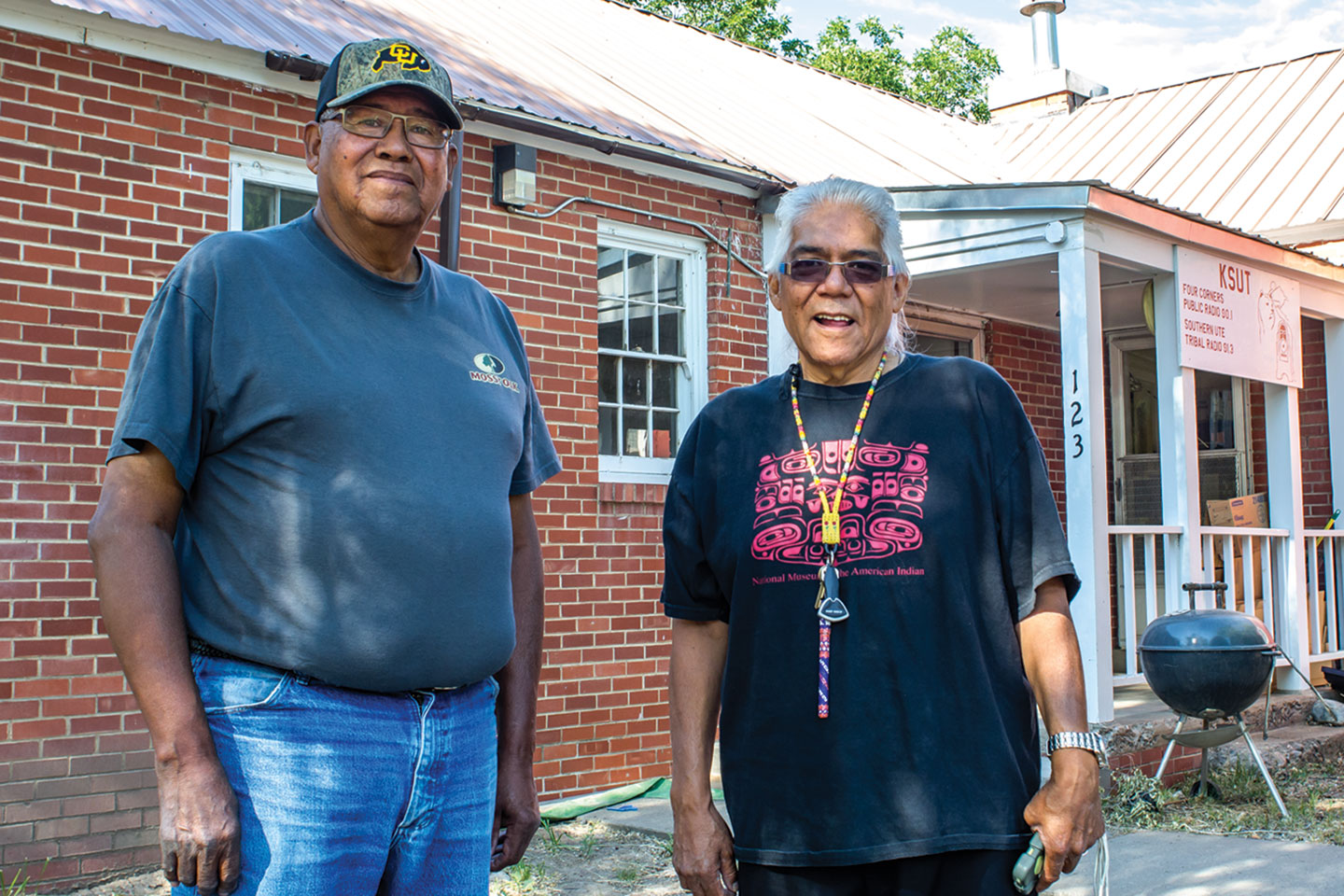Since it’s official launch in 1976, KSUT Public Radio has been a staple in distributing tribal news to the Southern Ute Indian Tribe, spreading multicultural awareness to listeners, and inspiring cultural common ground within the surrounding communities of the reservation. The history and leadership surrounding KSUT’s establishment has led the station to become one of the most acknowledged Native American radio stations in the United States.
The idea of KSUT was first brought forward in 1974 during an exchange between late Chairman, Leonard C. Burch, and Eddie Box Sr., KSUT’s original director. The discussion involved developing a cultural institution that would provide local and national programming and community engagement to the Southern Ute Indian Tribe. This became the driving force behind KSUT, and soon the idea of having a station that would deliver weekly hour-long radio broadcasts to tribal members in the Ute language was becoming a reality.
Tribal elder, Eddie Box Jr., has served KSUT for 37 years, 28 of those as board president. He described the work process during an era where Internet use wasn’t an option.
“We were such a small station at the time,” he said. “Back then, people would hand carry their news to our main office. Most of the news pertained to Southern Ute tribal members.
Erwin Taylor, tribal elder and one of KSUT’s original directors of the board, reflected on the expansion of KSUT and how communication with the public is crucial for a growing community.
“I served with KSUT for six years,” he said. “We were leaders in Indian land because we had visions with what [KSUT] would do for the public – address education, discuss native topics, and get grants to help our people … everyone worked equally to better the communication of the tribe and to keep our traditional ways going through history.”
KSUT had it’s first broadcast in June 1976. Complete with a 10-watt broadcasting signal, a mix of tribal news, messages, and music became available for all local listeners. At the time of its establishment, the station was one of only eight Native American radio stations operating in the United States. The original Board of Directors of KSUT consisted Leonard C. Burch, Eddie Box Sr., Chris A. Baker, Thelma Kuebler, Erwin Taylor, and John Baker.
It has been KSUT’s intention to unify local communities as it transcended to cultural and socioeconomic boundaries.
“It was my father’s vision to let tribal members know what was happening in the government,” said Box Jr. “That was very important. We were doing what he wanted, and we were all in agreement with his [intentions].”
Grounded by strong support from its Board of Directors and staff, the station expanded its broadcasting service in 1979 to neighboring communities after the relocation of a new transmitter. It wasn’t until 1984 when KSUT became a National Public Radio affiliate. This allowed the station to expand its listenership, which improved the numbers of tribal and non-tribal listeners.
In 1998, a second stream was added to KSUT’s transmitter, which soon established Four Corners Public Radio. This allowed KSUT to expand its large mix of music genres and programs to a larger regional audience while Southern Ute Tribal Radio focused on the original KSUT mission of delivering Native-focused news, music, and information to tribal members. Shows featured on both Four Corners Public Radio and Southern Ute Tribal Radio includes: Morning Edition, TED Radio Hour, Rez-olution Radio, and American Indian Living among a number of others.
Erwin Taylor commented on the positive outcomes of expanding communication on the reservation.
“We have to bring our communities closer so we can grow,” he said. “New ideas come every day. The sky is the limit – there is no looking back. This is the future of the youth… They must take with them the tradition of the elders and must know to protect their lands, culture, and sovereignty.”

